Streamline your measurement needs with this integrated temperature and pressure measuring devices. These innovative devices combine both sensing capabilities into a single unit, eliminating the need for separate installations and simplifying your setup.
Whether you’re monitoring industrial processes, HVAC systems, or scientific experiments, these dual-function sensors offer precise and reliable data acquisition, saving you time and resources.
- Space-saving: Reduce clutter and complexity with one sensor instead of two.
- Simplified installation: Streamlined setup and fewer connection points.
- Cost-effective: Potentially lower cost compared to purchasing two separate sensors.
- Efficient data acquisition: Simultaneous measurement of temperature and pressure.
Explore this selection of dual-function temperature and pressure sensing instruments to provide a convenient integrated measurement solution for your application.
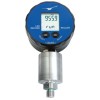 LEO Record (Ei) Capo Low Pressure Logger
LEO Record (Ei) Capo Low Pressure Logger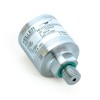 41X Low Range Digital Output Pressure Sensor
41X Low Range Digital Output Pressure Sensor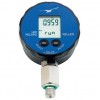 LEO Record (Ei) Pressure Data Logger
LEO Record (Ei) Pressure Data Logger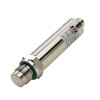 ATM/T Pressure and Temperature Dual Output Transmitter
ATM/T Pressure and Temperature Dual Output Transmitter Clean Room Monitor for Air Differential Pressure, Temperature and Humidity – PMDS4
Clean Room Monitor for Air Differential Pressure, Temperature and Humidity – PMDS4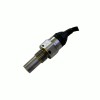 ASMT Miniature Combined Temperature and Pressure Transducer
ASMT Miniature Combined Temperature and Pressure Transducer
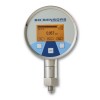 10 barg dual pressure & temperature pressure logging gauge - Pressure and temperature logging gauge accurately tests pressure up to 10 barg and monitors temperature from -10 to 55°C, with internal data logging and USB cable for PC transfer
10 barg dual pressure & temperature pressure logging gauge - Pressure and temperature logging gauge accurately tests pressure up to 10 barg and monitors temperature from -10 to 55°C, with internal data logging and USB cable for PC transfer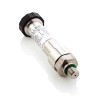 Wind turbine USB PC logging pressure & temperature sensor - I need to log the atmospheric pressure and temperature on the roof of a Wind turbine via a USB interface & software for a Windows PC.
Wind turbine USB PC logging pressure & temperature sensor - I need to log the atmospheric pressure and temperature on the roof of a Wind turbine via a USB interface & software for a Windows PC.  10 bar g miniature pressure transducer with integrated PT100 thermometer - This small size pressure & temperature transducer has a PT100 platinum resistance thermometer and a 0 to 10 bar gauge pressure range with a radiometric output of 0.5 to 4.5 volts dc with a supply voltage of 5 volts dc.
10 bar g miniature pressure transducer with integrated PT100 thermometer - This small size pressure & temperature transducer has a PT100 platinum resistance thermometer and a 0 to 10 bar gauge pressure range with a radiometric output of 0.5 to 4.5 volts dc with a supply voltage of 5 volts dc. Gearbox oil dual pressure/temperature sensor & display readout with 60psig pressure and 0-100C temperature range - Monitor gearbox oil pressure & temperature with a single sensor. 4-20mA output, digital display, and alarm options.
Gearbox oil dual pressure/temperature sensor & display readout with 60psig pressure and 0-100C temperature range - Monitor gearbox oil pressure & temperature with a single sensor. 4-20mA output, digital display, and alarm options. 10 bar pressure transmitter with integral temperature probe for 0-100degC - Dual 4-20mA output pressure sensor with a 10 bar g pressure range and an integrated temperature probe for measuring 0 to 100 degrees Celsius (212 degrees Fahrenheit).
10 bar pressure transmitter with integral temperature probe for 0-100degC - Dual 4-20mA output pressure sensor with a 10 bar g pressure range and an integrated temperature probe for measuring 0 to 100 degrees Celsius (212 degrees Fahrenheit).
The integrated design of dual temperature and pressure sensors offers a streamlined approach to process monitoring, providing simultaneous measurement of both parameters within a single housing. This consolidated design eliminates the need for separate sensor installations, reducing the overall complexity of your system’s architecture. The primary advantage lies not just in convenience, but in the reduction of potential failure points – fewer devices translate to a lower probability of system malfunctions.
Specifically, consider applications where process piping space is at a premium, such as within compact industrial machinery, analytical instrumentation skids, or densely packed research setups. The single-point installation reduces the need for multiple ports or t-fittings, which can introduce leak paths and complicate maintenance.
Another significant advantage is realized in dynamic systems where temperature and pressure variations are intrinsically linked. For example, in a closed-loop fluid system, a change in pressure can often correlate with a shift in temperature. Capturing both parameters concurrently from a single location with a dual sensor enables more accurate compensation algorithms and improved process control, reducing errors and improved efficiency.
In high-purity or sanitary applications, like those found in biopharmaceutical or food and beverage processing, minimizing dead legs and crevices is crucial for maintaining hygiene. A combined temperature and pressure sensor, particularly those designed with flush diaphragm configurations, contributes to a cleaner, more easily sanitized system than two independently mounted instruments.
Consider the deployment of these dual-function sensors in remote or difficult-to-access locations, such as within environmental chambers, downhole tools, or on offshore platforms. The reduced component count simplifies installation and maintenance, reducing the time and expense associated with specialized access. These systems can reduce the number of cables or wireless transmitters to further reduce the complexity.
Related Application Questions and Answers
Contact us about this Dual Temperature and Pressure page to request more information, or to discuss your application requirements.
